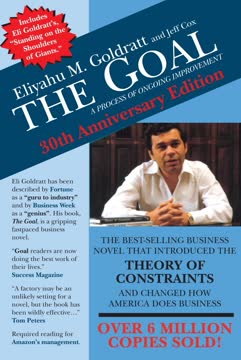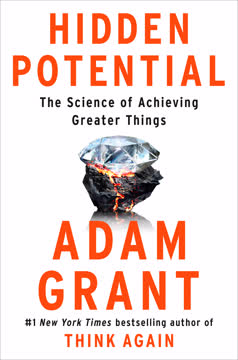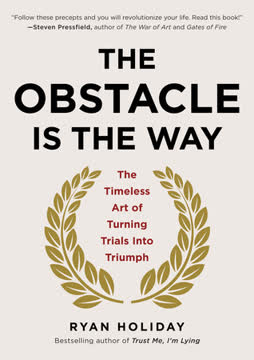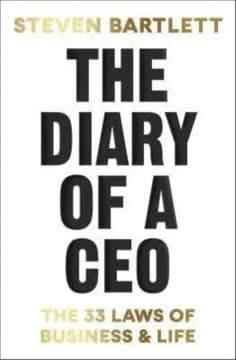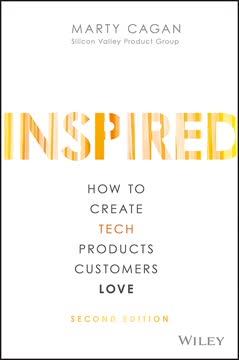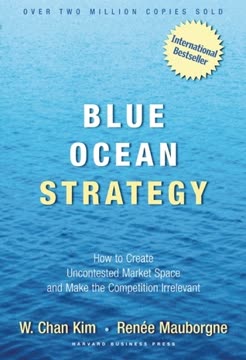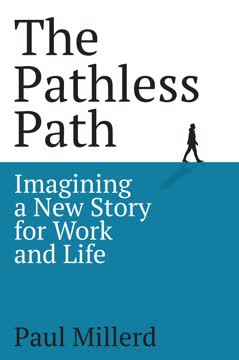نکات کلیدی
1. اصطکاک نیروی نامرئی است که رفتار انسانی و موفقیت کسبوکار را شکل میدهد
کاهش اصطکاک، اقدام را افزایش میدهد.
قانون اصطکاک بیان میکند که سطح اقدام به طور معکوس با سطح اصطکاک متناسب است. وقتی چیزی را آسانتر میکنید، مردم بیشتر از آن انجام میدهند. وقتی چیزی را دشوارتر میکنید، مردم کمتر از آن انجام میدهند. این قانون در همه چیز از رفتار مصرفکننده تا بهرهوری کارکنان صدق میکند.
اصطکاک به اشکال مختلفی ظاهر میشود:
- تلاش فیزیکی مورد نیاز
- تلاش ذهنی یا بار شناختی
- زمان و تأخیر
- پیچیدگی و سردرگمی
- موانع بوروکراتیک
کسبوکارها و سازمانهایی که منابع اصطکاک را شناسایی و حذف میکنند، به یک مزیت رقابتی قدرتمند دست مییابند. کاهش اصطکاک به مشتریان اجازه میدهد تا به راحتی اقدامات مورد نظر خود را انجام دهند، کارکنان به طور کارآمدتری کار کنند و فرآیندها روانتر اجرا شوند. موفقترین شرکتها به کاهش تلاش مشتری در هر نقطه تماس وسواس دارند.
2. کاهش اصطکاک در تجربه مشتری وفاداری و سودآوری را افزایش میدهد
نود و شش درصد از مشتریانی که برای حل مشکلات خود تلاش زیادی میکنند، بیشتر بیوفا میشوند.
تلاش مشتری کلیدی است. تحقیقات نشان میدهد که آسان کردن امور برای مشتریان بسیار مهمتر از "شگفتزده کردن" آنها با خدمات فراتر از انتظار برای ایجاد وفاداری است. شرکتها باید بر حذف موانع و سادهسازی فرآیندها تمرکز کنند تا سرمایهگذاری در لحظات "واو" پرهزینه.
تجربیات با تلاش بالا بیوفایی را تحریک میکنند:
- 96% از مشتریانی که تجربیات با تلاش بالا گزارش میدهند بیوفا میشوند
- تنها 9% از مشتریان با تجربیات با تلاش کم بیوفا میشوند
- مشتریان با تلاش بالا 4 برابر کمتر احتمال دارد که دوباره خرید کنند
- 88% از مشتریان با تلاش بالا چیزهای منفی درباره شرکت میگویند
برای کاهش تلاش مشتری، شرکتها باید مشکلات را در یک تماس حل کنند، نیاز به تغییر کانال یا تکرار اطلاعات را حذف کنند و کارکنان خط مقدم را برای حل مشکلات توانمند سازند. حتی کاهشهای کوچک در اصطکاک میتواند تأثیر بزرگی بر وفاداری مشتری و تبلیغات دهان به دهان داشته باشد.
3. غولهای دیجیتال مانند آمازون و گوگل با کاهش تلاش کاربر تسلط پیدا میکنند
وقتی اصطکاک را کاهش میدهید و چیزی را آسان میکنید، مردم بیشتر از آن انجام میدهند.
طراحی بدون اصطکاک در هسته موفقترین شرکتهای دیجیتال قرار دارد. سفارش 1-کلیک آمازون و عضویت پرایم اصطکاک را از خرید آنلاین حذف میکند. پیشبینیهای جستجوی گوگل و تکمیل خودکار تلاش تایپ را کاهش میدهد. این راحتیهای به ظاهر کوچک به ایجاد تجربه کاربری جذابی منجر میشود که رقبا به سختی میتوانند با آن رقابت کنند.
نوآوریهای کلیدی در کاهش اصطکاک:
- سفارش 1-کلیک آمازون
- پیشبینیهای جستجو و تکمیل خودکار گوگل
- درخواست و پرداخت بدون درز اوبر
- فرآیند ثبتنام ساده اینستاگرام و واتساپ
با تمرکز وسواسی بر آسان کردن امور برای کاربران، این شرکتها به موقعیتهای بازار مسلط دست یافتهاند. تجربیات بدون اصطکاک آنها عادتها و وفاداری ایجاد میکند که مشتریان را به بازگشت وادار میکند. هر شرکتی میتواند از این اصول برای بهبود محصولات و خدمات دیجیتال خود استفاده کند.
4. بوروکراسی و کاغذبازی کشش سازمانی پرهزینهای ایجاد میکند
اقتصاد ایالات متحده سالانه 3 تریلیون دلار در بهرهوری به دلیل بوروکراسی اضافی از دست میدهد.
کشش سازمانی به تأثیر تجمعی سیاستهای بوروکراتیک، جلسات بیمورد، تأییدات بیش از حد و سایر اصطکاکهای داخلی که کار را کند و بهرهوری را کاهش میدهند، اشاره دارد. این مالیات پنهان بر کارایی میتواند میلیاردها دلار در خروجی از دست رفته برای شرکتها هزینه داشته باشد.
منابع رایج کشش سازمانی:
- جلسات غیرضروری
- ایمیلهای بیش از حد
- فرآیندهای تأیید پیچیده
- گزارشها و کاغذبازیهای تکراری
- عدم وضوح در اختیار تصمیمگیری
رهبران باید به طور فعال برای شناسایی و حذف منابع اصطکاک سازمانی کار کنند. این میتواند شامل سادهسازی فرآیندها، توانمندسازی کارکنان، کاهش جلسات و گزارشهای غیرضروری و ایجاد فرهنگ اعتماد باشد. حتی کاهشهای کوچک در اصطکاک داخلی میتواند بهبودهای قابل توجهی در بهرهوری ایجاد کند وقتی که در سراسر یک سازمان اعمال شود.
5. اعتماد و توانمندسازی اصطکاک داخلی را کاهش و عملکرد را افزایش میدهد
کارکنان در شرکتهای با اعتماد بالا گزارش میدهند: 74 درصد استرس کمتر، 106 درصد انرژی بیشتر در کار، 50 درصد بهرهوری بالاتر، 13 درصد روزهای بیماری کمتر، 76 درصد مشارکت بیشتر، 29 درصد رضایت بیشتر از زندگی خود، 40 درصد فرسودگی کمتر.
اعتماد عملکرد را تحریک میکند. تحقیقات نشان میدهد که سازمانهای با اعتماد بالا به طور قابل توجهی از همتایان خود پیشی میگیرند. وقتی کارکنان احساس اعتماد و توانمندی میکنند، استرس کمتری تجربه میکنند، مشارکت بیشتری دارند و بهرهوری بیشتری دارند. اعتماد همچنین نیاز به مکانیزمهای کنترل بوروکراتیک که اصطکاک ایجاد میکنند را کاهش میدهد.
ایجاد فرهنگ اعتماد بالا:
- اطلاعات را به طور گسترده به اشتراک بگذارید
- عملکرد عالی را به رسمیت بشناسید
- به افراد اختیار انتخاب در نحوه انجام کارشان بدهید
- به عنوان یک رهبر آسیبپذیری نشان دهید
- در توسعه کارکنان سرمایهگذاری کنید
رهبران باید بر ایجاد محیطی از اعتماد تمرکز کنند نه اجرای کنترلهای سختگیرانه. این نه تنها عملکرد را بهبود میبخشد بلکه اصطکاک ناشی از قوانین، تأییدات و مدیریت خرد را کاهش میدهد. فرهنگ اعتماد به سازمانها اجازه میدهد که چابکتر و پاسخگوتر باشند.
6. شکلگیری عادت از طریق اقدامات کوچک و بدون اصطکاک موفق میشود
بعد از ریختن قهوه صبحگاهیام، دفترچهام را باز میکنم.
عادتهای کوچک یک روش تغییر رفتار است که توسط محقق استنفورد، بیجی فاگ، توسعه یافته است. این روش شامل کاهش رفتارهای مطلوب به سادهترین و سریعترین شکل آنها و لنگر انداختن آنها به عادتهای موجود است. این کار باعث میشود که عادتهای جدید تقریباً بدون اصطکاک پذیرفته شوند.
کلیدهای روش عادتهای کوچک:
- رفتار جدید را بسیار کوچک و آسان کنید
- آن را به یک عادت یا روال موجود لنگر دهید
- پیروزیهای کوچک را برای تقویت عادت جشن بگیرید
مثالهایی از عادتهای کوچک شامل نخ دندان کشیدن یک دندان بعد از مسواک زدن یا انجام دو شنا بعد از استفاده از دستشویی است. با شروع با اقدامات بسیار کوچک، افراد میتوانند از اصطکاک و مقاومتی که اغلب تغییرات عادت بزرگتر را از مسیر خارج میکند، عبور کنند. با گذشت زمان، این عادتهای کوچک میتوانند به رفتارهای مهمتری تبدیل شوند.
7. مهندسی اصطکاک میتواند رفتار را هدایت کند وقتی حذف کامل آن نامطلوب است
اگر میخواهید کسی کاری انجام دهد، در نظر بگیرید که یک جایگزین بسیار دشوارتر ارائه دهید. این کار باعث میشود که اقدام مورد نظر شما آسانتر به نظر برسد.
طراحی اصطکاک شامل افزودن یا حفظ استراتژیک اصطکاک برای هدایت رفتار در جهتهای مطلوب است. در حالی که کاهش اصطکاک اغلب هدف است، مواقعی وجود دارد که برخی اصطکاکها مفید یا ضروری هستند.
مثالهایی از اصطکاک سازنده:
- دورههای "خنک شدن" برای خریدهای عمده
- سیاستهای اهدای عضو با انصراف
- قرار دادن غذاهای سالم در سطح چشم در کافهتریاها
- افزودن مراحل برای لغو اشتراک از خدمات ضروری
با مهندسی دقیق اصطکاک، سازمانها میتوانند افراد را به سمت انتخابهای بهتر هدایت کنند در حالی که آزادی انتخاب را حفظ میکنند. این رویکرد میتواند به ویژه در زمینههایی مانند سلامت، ایمنی و تصمیمگیری مالی مؤثر باشد که تجربیات کاملاً بدون اصطکاک ممکن است به نتایج نامطلوب منجر شود.
8. اصطکاک فرهنگی و مقرراتی بر رشد اقتصادی در مقیاس ملی تأثیر میگذارد
اقتصاد چین به عنوان تولید ناخالص داخلی (GDP) از سال 1987 تا 2017 به میزان 82 تریلیون دلار بیشتر از هند رشد کرد، حتی با اینکه دو اقتصاد در ابتدا از نظر اندازه مشابه بودند.
اصطکاک ملی به شکل بوروکراسی، فساد و مقررات بیش از حد میتواند به طور قابل توجهی رشد اقتصادی را مختل کند. کشورهایی با فرآیندهای کسبوکار ساده و بارهای مقرراتی کم تمایل به توسعه اقتصادی سریعتر و استانداردهای زندگی بالاتر دارند.
عوامل مؤثر بر اصطکاک ملی:
- فرآیندهای پیچیده ثبت کسبوکار
- سیستمهای قانونی ناکارآمد
- فساد و رشوهخواری
- مجوزهای شغلی بیش از حد
- قوانین کار انعطافناپذیر
رتبهبندیهای "سهولت انجام کسبوکار" بانک جهانی نشان میدهد که چگونه کاهش اصطکاک از طریق اصلاحات مقرراتی میتواند رشد اقتصادی را تحریک کند. کشورهایی که شروع و اداره کسبوکارها را آسانتر میکنند، شاهد افزایش کارآفرینی، ایجاد شغل و پویایی اقتصادی کلی هستند. سیاستگذاران باید بر حذف موانع غیرضروری برای فعالیتهای کسبوکار تمرکز کنند.
9. اصطکاک خیالی ناشی از نارسایی شناختی بر تصمیمگیری تأثیر میگذارد
وقتی افراد توضیحات را در فونتی آسان برای خواندن میخوانند، تنها 17 درصد نمیتوانستند تصمیم بگیرند که کدام تلفن را ترجیح میدهند. وقتی توضیحات در فونتی دشوارتر چاپ شد، این درصد به 41 درصد افزایش یافت.
روانی شناختی به سهولت پردازش اطلاعات توسط مغز ما اشاره دارد. وقتی اطلاعات به گونهای ارائه میشود که پردازش آن سختتر است (نارسایی)، نوعی اصطکاک خیالی ایجاد میکند که میتواند بر تصمیمگیری و رفتار تأثیر بگذارد.
اثرات نارسایی شناختی:
- وظایف دشوارتر و زمانبرتر به نظر میرسند
- ریسکها بالاتر به نظر میرسند
- تصمیمگیری مختل میشود
- تبعیت از دستورالعملها کاهش مییابد
حتی تغییرات کوچک در نحوه ارائه اطلاعات میتواند تأثیرات قابل توجهی داشته باشد. استفاده از فونتهای واضح و آسان برای خواندن و زبان ساده میتواند این اصطکاک خیالی را کاهش دهد. این امر به ویژه در زمینههایی مانند دستورالعملهای پزشکی، افشای مالی و رابطهای کاربری که وضوح و سهولت درک بسیار مهم است، اهمیت دارد.
آخرین بهروزرسانی::
FAQ
1. What is FRICTION―The Untapped Force That Can Be Your Most Powerful Advantage by Roger Dooley about?
- Core concept of friction: The book explores friction as any unnecessary obstacle—time, effort, or money—that impedes tasks in business, government, and daily life.
- Behavioral impact: Roger Dooley demonstrates how friction influences decisions, habits, productivity, and organizational outcomes.
- Broad application: The book covers friction in customer experience, internal processes, technology, and even national economies, showing its pervasive effects.
- Actionable focus: Dooley provides readers with tools and “friction goggles” to identify, reduce, or strategically add friction for better results.
2. Why should I read FRICTION by Roger Dooley?
- Improve productivity and satisfaction: The book reveals how eliminating unnecessary friction can save time, reduce costs, and increase satisfaction for both employees and customers.
- Behavioral insights: It introduces frameworks like the Fogg Behavior Model and Persuasion Slide to explain how friction interacts with motivation and ability.
- Practical strategies: Readers gain actionable methods to spot and address friction points in organizations, technology, and daily habits.
- Expert endorsements: The book is praised by thought leaders like Robert Cialdini, Richard Thaler, and Daniel Pink for its practical and transformative insights.
3. What are the key takeaways from FRICTION by Roger Dooley?
- Reducing friction increases action: The fundamental law is that “Decreasing friction increases action,” making tasks easier leads to more engagement and better outcomes.
- Friction is costly but fixable: Friction causes massive losses in e-commerce, productivity, and customer satisfaction, but can be systematically identified and reduced.
- Internal and external impact: Friction affects both customer experience and internal business processes, and addressing it can yield significant benefits.
- Strategic use of friction: Sometimes, adding friction can help guide behavior in positive ways, such as discouraging undesirable actions.
4. How does Roger Dooley define and categorize friction in FRICTION?
- Physical and cognitive friction: Physical friction includes tangible obstacles like complex forms or long lines, while cognitive friction involves mental effort, such as confusing instructions or decision fatigue.
- Organizational and bureaucratic friction: Excessive rules, meetings, and red tape create drag within companies and governments, reducing efficiency and morale.
- Digital friction: Poorly designed user interfaces, excessive emails, and complicated apps frustrate users and reduce engagement.
- Imaginary friction: Cognitive disfluency, or perceived difficulty, can deter decisions even when the actual task is simple.
5. What is the “law of friction” in FRICTION by Roger Dooley?
- Basic principle: The law states that “Decreasing friction increases action,” meaning people are more likely to do something if it requires less effort.
- Inverse relationship: The level of action is inversely proportional to the level of friction; more friction means less action and vice versa.
- Corollaries: Making something easier increases the likelihood and frequency of action, while making it harder reduces participation.
- Behavioral economics tie-in: The law aligns with the “law of least effort,” a core principle in behavioral science.
6. How does FRICTION by Roger Dooley relate to behavioral economics and motivation?
- Fogg Behavior Model: The book discusses how behavior occurs when motivation, ability (low friction), and a prompt converge; reducing friction increases ability.
- Friction vs. motivation: Friction is described as the “mortal enemy of motivation”—even highly motivated people may avoid actions if friction is too high.
- Nudges and defaults: Making the desired behavior the path of least resistance, such as through automatic enrollment, increases compliance.
- Law of least effort: People naturally choose the easiest path, reinforcing the importance of reducing friction to influence behavior.
7. What are some real-world examples of friction reduction in business and customer experience from FRICTION?
- Amazon’s innovations: 1-Click ordering, permanent login, and frustration-free packaging reduce customer effort and increase loyalty.
- Alibaba’s New Retail: Seamless integration of physical and digital shopping with mobile apps and easy payment enhances customer experience in China.
- Disney’s MagicBand: Eliminating friction in park entry, payments, and ride lines improved guest satisfaction and increased revenue.
- Securifi’s router: A user-friendly touchscreen interface drastically reduced setup friction, leading to market success.
8. How does FRICTION by Roger Dooley address internal business friction and bureaucracy?
- Organizational drag: Bureaucracy, pointless meetings, and excessive procedures slow decision-making and reduce productivity.
- Leadership examples: Jack Welch’s delayering at GE and Michael Abrashoff’s rule-busting on the USS Benfold show how reducing internal friction boosts agility and engagement.
- Meeting and email overload: Excessive meetings and emails waste time; companies like Ferrari and others have implemented limits to reduce this friction.
- Kafka Brigade: A Dutch initiative empowers citizens and employees to report and challenge bureaucratic friction, leading to meaningful improvements.
9. What is the impact of friction on national economies, as discussed in FRICTION by Roger Dooley?
- Comparative growth: China’s rapid economic growth is contrasted with India’s slower progress, attributed in part to India’s high bureaucratic friction.
- Ease of doing business: World Bank data shows China’s shorter times for business processes foster entrepreneurship and middle-class growth.
- Economic cost: Excessive regulations and red tape in India hinder business formation and job creation, illustrating how national-level friction affects prosperity.
- Broader lesson: Reducing friction at the national level can have transformative effects on economic development.
10. How does trust influence friction, according to FRICTION by Roger Dooley?
- Trust reduces controls: High-trust environments require fewer rules and checks, lowering friction in transactions and workflows.
- Science of trust: Research by Paul Zak shows that trust increases productivity, engagement, and lowers stress in organizations.
- Distrust-driven friction: Rules based on distrust add unnecessary burdens; removing them saves time and fosters a positive culture.
- Practical implication: Building trust can be a powerful strategy for reducing friction and improving organizational performance.
11. How can friction be deliberately added to influence behavior, as described in FRICTION by Roger Dooley?
- Friction engineering: Adding small, often unnoticed obstacles can reduce undesirable behaviors, such as moving candy bowls farther away to decrease consumption.
- Digital examples: Platforms like Nextdoor added friction to crime reporting forms to reduce racist posts by requiring more detailed descriptions.
- Marketing applications: Offering a difficult alternative (like a long web form) can nudge users toward a preferred action (like calling a phone number).
- Behavioral design: Strategic addition of friction can help guide people toward or away from specific behaviors.
12. What practical advice does Roger Dooley offer for habit formation and reducing friction in daily life and business?
- Tiny Habits method: Start with very small, easy actions (e.g., flossing one tooth) anchored to existing routines to build lasting habits with minimal friction.
- Habit stacking: Combine new habits with established ones to create reinforcing chains, but keep initial commitments small to avoid failure.
- Add friction to bad habits: Increase difficulty for undesirable behaviors (e.g., unplugging the TV) to reduce their occurrence.
- Customer experience tips: Resolve issues in a single contact, avoid transfers, and eliminate repetitive information requests to lower customer effort and increase loyalty.
نقد و بررسی
کتاب اصطکاک―نیروی ناشناختهای که میتواند بزرگترین مزیت شما باشد با بررسی عمیق اصطکاک در کسبوکار و زندگی روزمره، نقدهای مثبتی دریافت کرده است. خوانندگان به قابلیت کاربرد این مفهوم و مثالهای متعدد ارائهشده در کتاب توجه دارند، هرچند برخی آن را کمی طولانی میدانند. بسیاری از سبک نوشتاری و تحقیقات دوولی تمجید کرده و به پتانسیل این کتاب در تغییر دیدگاهها نسبت به فرآیندها و رفتار مصرفکننده اشاره میکنند. نسخهی صوتی این کتاب نیز به خاطر لذتبخش کردن سفرهای طولانی مورد تحسین قرار گرفته است. در حالی که تمرکز اصلی کتاب بر روی کاربردهای تجاری است، به جنبههای زندگی شخصی و بوروکراسی دولتی نیز پرداخته و آن را برای افرادی که به کارایی و بازاریابی علاقهمندند، خواندنی میسازد.
Similar Books

